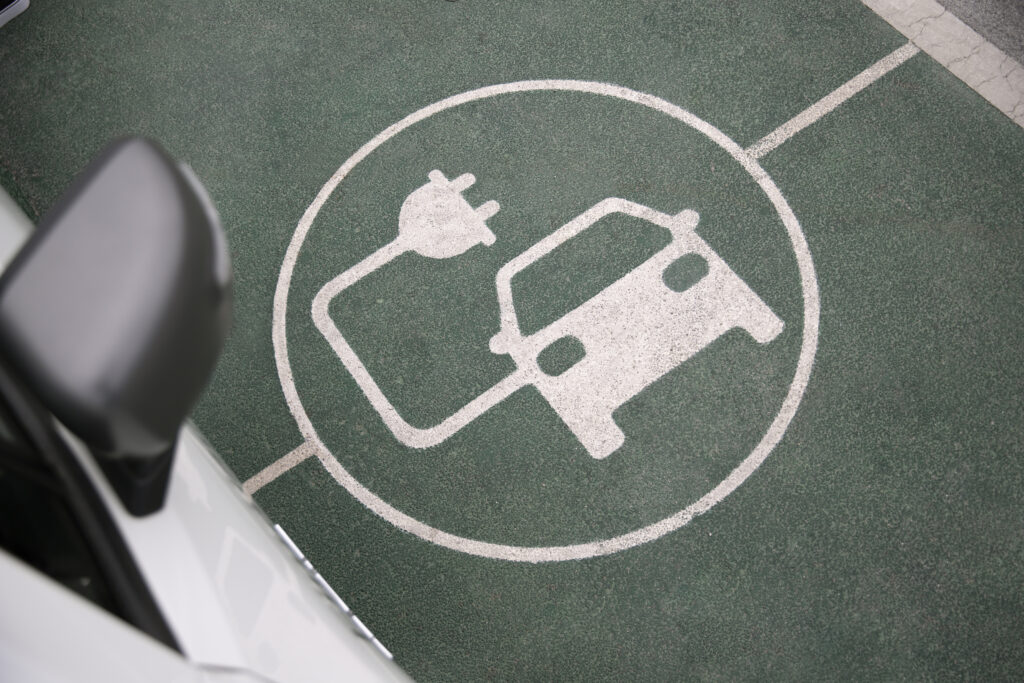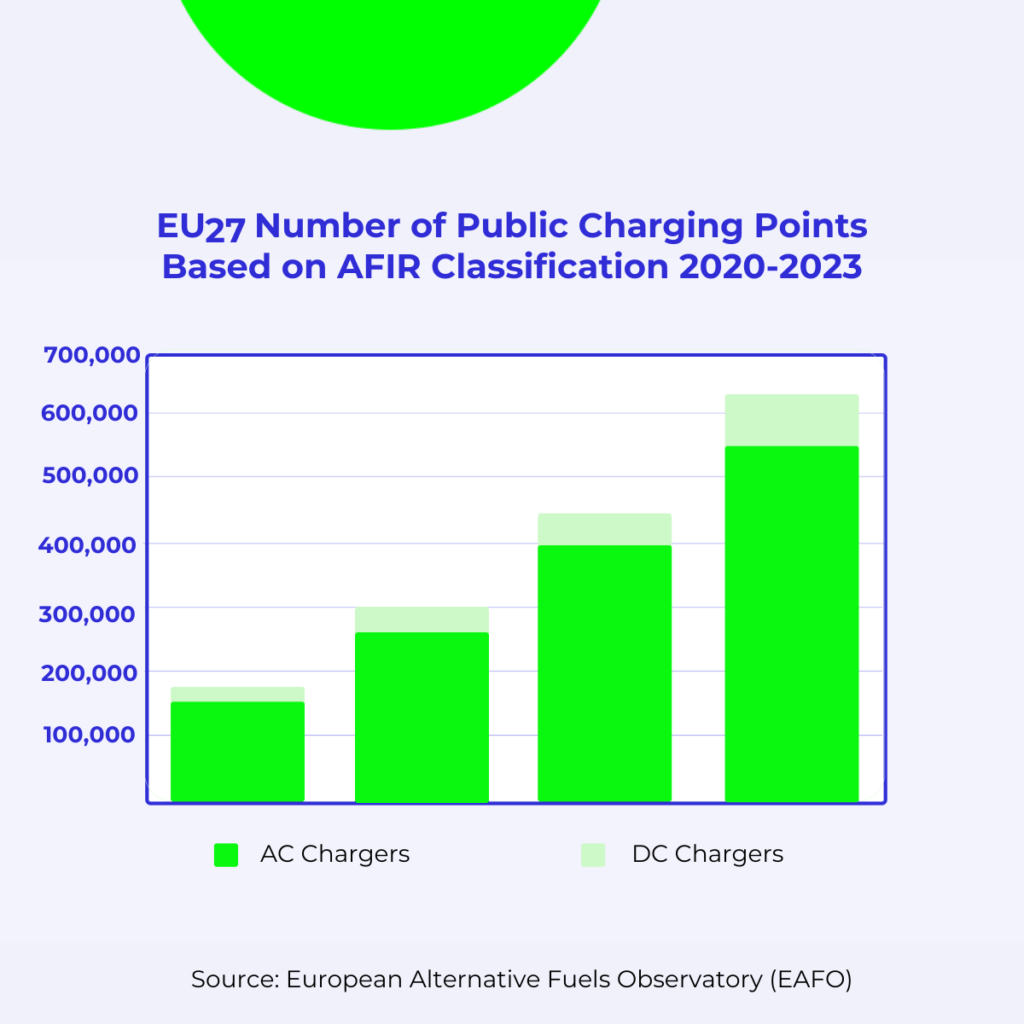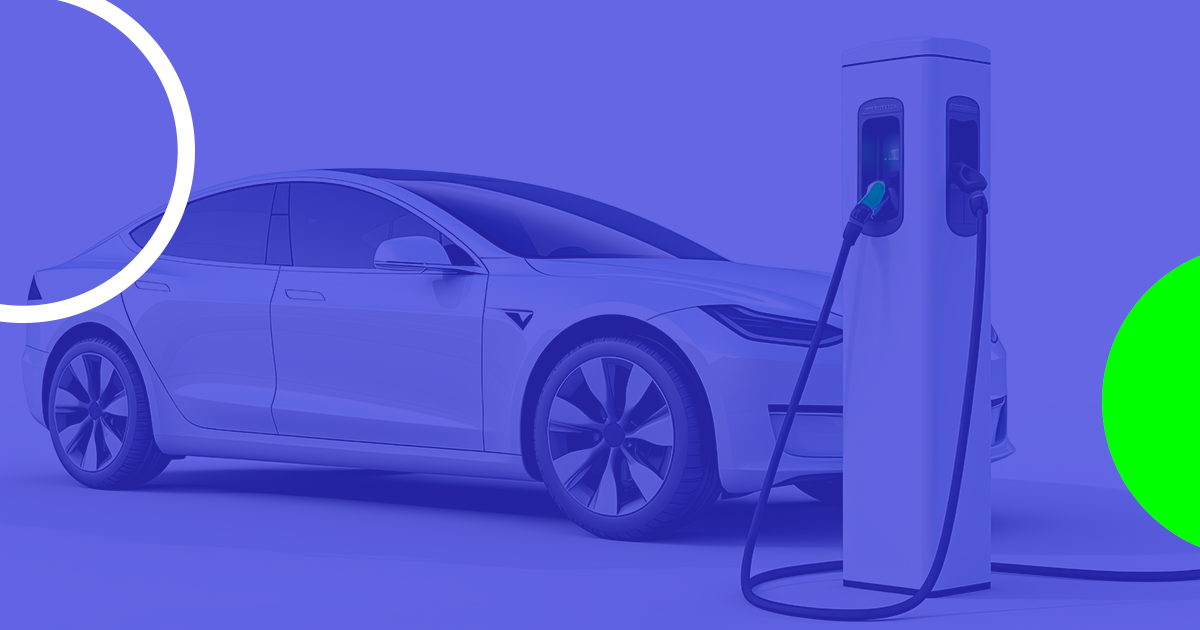The overall volume for the full year of 2023 surpassed 1.5 million units, reflecting a substantial 37% increase compared to 2022. The battery-electric car market share reached 14.6% in 2023. (1)
Pretty impressive, right?
The race towards net-zero emissions by 2050 is gaining momentum, with the electric vehicle (EV) industry experiencing significant growth. The EU is at the forefront of this transition, aiming for a monumental 40 million EVs on the roads by 2030 (2), a stark increase from the current 8 million across Europe.
Slovakia and the EU: Progress and Challenges
The overall EV sales surpassed 1.5 million units, marking a substantial 37% rise compared to 2022, with the battery-electric car market share reaching 14.6%. (3) Slovakia is contributing to this progress with over 10,000 EVs registered by the end of 2023 (4). However, a crucial challenge remains – the lack of sufficient charging infrastructure to support the rapidly increasing EV population.
The revised Energy Performance of Buildings Directive (EPBD), an EU regulation promoting energy efficiency and renewable energy in buildings, is driving this expansion.
This directive mandates specific actions for new and renovated buildings:
1. Installation of charging points
New non-residential buildings with more than 5 parking spaces and new residential buildings with more than three parking spaces must have charging stations installed.

2. Pre-cabling for future installations
All new (and renovated) residential buildings with more than three parking spaces must be pre-cabled for charging points in all available spots. Existing buildings with over 20 parking spaces are subject to a similar requirement, with pre-cabling for one in two parking spaces mandated by 2033.
3. Smart charging emphasis
The EPBD prioritizes smart charging points that adjust charging activities based on grid signals. Smart charging points are advanced EV chargers that have the capability to adjust the charging of electric vehicles based on signals from the electricity grid. This means that these charging points can increase or decrease the rate of charging based on various factors, such as the availability of electricity, its cost at different times of the day, and the demand on the grid.
- Specifically, new (and renovated) non-residential buildings with more than 5 parking spaces require at least one smart charging point installation.
Additionally, the EPBD facilitates charging point installation for residents in multi-family buildings, further supporting the widespread adoption of EVs.

The Challenge of Charging Infrastructure
Despite these proactive policies, the expansion of the charging network is not keeping pace with EV adoption. The ACEA points out that to meet future demands, the EU must install about 22,000 charging points every week until 2030 (5)—a target currently far from reach.
“We need mass-market adoption of electric cars in all EU countries to achieve Europe’s ambitious CO2-reduction targets. This will not happen without widespread availability of public charging infrastructure right across the region.
Sigrid de Vrie, Director General at ACEA
How ParkingAround Provides a Solution
This is where ParkingAround steps in as a game-changer. As a smart share parking system, ParkingAround unlocks the potential of existing EV charging infrastructure. By enabling EV owners to share their private charging stations when unused, we significantly increase the efficiency of the current network. This not only makes charging more accessible but also optimizes resource utilization, paving the way for a smoother transition to widespread electric mobility.
Additionally, ParkingAround enhances the system by providing real-time tracking of parking occupancy. This feature is crucial as many drivers may not realize how long their vehicle needs to charge and might inadvertently overstay, occupying the charging spot longer than necessary. With ParkingAround, facility managers can monitor usage in real time, and effectively manage and enforce parking policies. This ensures that the charging spots are used efficiently and are available for others once the charging is complete, thereby improving the overall management and satisfaction of the facility.
By leveraging shared economy principles, ParkingAround offers a crucial solution to the charging infrastructure bottleneck. This approach empowers cities to accommodate the growing number of EVs on their roads, ultimately contributing to cleaner, greener, and more sustainable urban environments. As we collectively strive towards achieving net-zero emissions by 2050 (6), innovative solutions like ParkingAround are vital in ensuring that the shift to electric vehicles translates into tangible progress, leaving a lasting positive impact on our planet.
Sources:

Leave a Reply